
Introduction
In today’s inflation-driven grocery sector, pricing strategies have become more dynamic than
ever. With global supply chains under pressure and consumer preferences constantly shifting,
pricing agility is crucial for retailers and FMCG brands. This is where Grocery API Data
Extraction for Pricing Insights becomes indispensable. By tapping into real-time and historical
pricing feeds from major grocery and supermarket websites, businesses can optimize price points,
detect promotions, and respond quickly to competitor changes.
Between 2020 and 2025, over 61% of online grocery sellers adopted automated pricing systems
powered by data scraping APIs and market analytics. This shift underscores the growing
importance of actionable pricing intelligence.
Whether it’s SKU-level comparisons, store-wise price fluctuations, or promotion pattern
recognition, Grocery API Data Extraction for Pricing Insights helps stakeholders make profitable
decisions in real time. By integrating this technology with tools like AI-driven recommendation
engines and predictive analytics, brands can fine-tune pricing across platforms, seasons, and
regions—even within 15-minute delivery services.
This blog explores how to build effective grocery price intelligence workflows using reliable
scraping tools, automation, and APIs to win in the modern commerce landscape.
Real-Time Grocery Price Scraping API for Competitive Monitoring
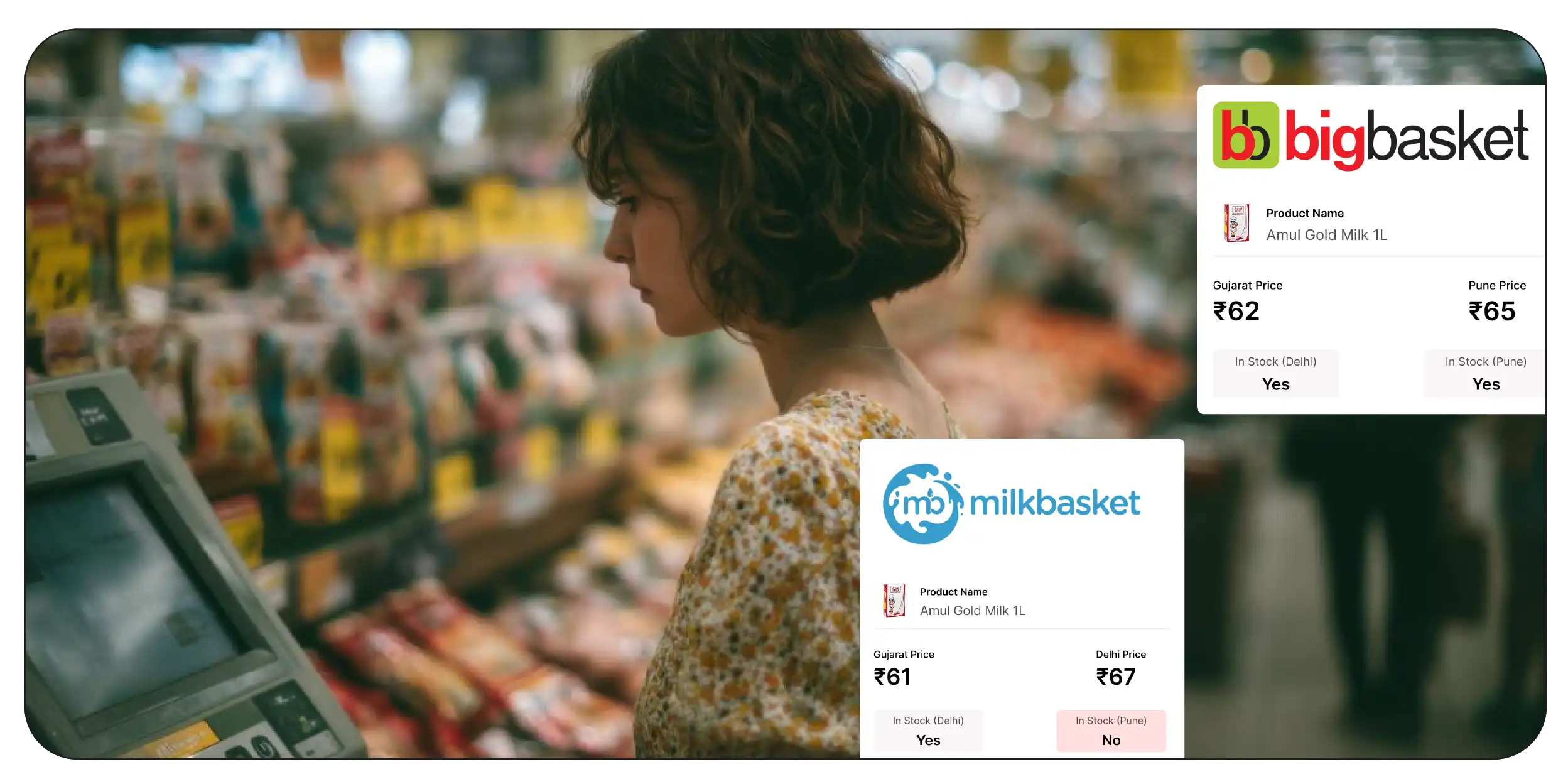
The competitive grocery retail environment demands real-time decision-making powered by
accurate, timely data. A Real-Time Grocery Price Scraping API enables brands and retailers to
gather instant pricing data from online grocery stores, marketplaces, and delivery platforms.
This functionality is critical for price-sensitive categories such as dairy, snacks, cooking
essentials, and hygiene products where price changes can influence buyer behavior within hours.
Between 2020 and 2025, adoption of real-time grocery price APIs surged by 73%, reflecting the
sector’s growing reliance on tech-driven price intelligence tools.
| Year |
Retailers Using Real-Time APIs |
Avg. Price Adjustments/Day |
| 2020 |
9,300 |
4.1 |
| 2021 |
11,800 |
5.3 |
| 2022 |
14,900 |
6.8 |
| 2023 |
17,400 |
7.2 |
| 2024 |
20,300 |
8.5 |
| 2025 |
22,700 |
9.9 |
This rapid increase stems from the need for dynamic pricing—a strategy in which product prices
fluctuate in near real time based on competitor moves, stock levels, consumer demand, and
location-specific trends. Through Real-Time Grocery Price Scraping API integrations, businesses
can monitor local and national chains, niche organic grocery sellers, and quick commerce
platforms simultaneously.
For instance, during peak inflation months in 2023, FMCG brands leveraging real-time APIs
outperformed competitors by maintaining price competitiveness without compromising margins. On
average, brands using API-based monitoring tools reduced pricing errors by 38% and increased
on-page conversion by 21%.
The use of Real-Time Grocery Price Scraping API also improves decision-making across marketing
and logistics. Campaign budgets can be allocated based on regional price elasticity, while
inventory stockpiling decisions can align with predicted price hikes or drops detected early
through pricing trends.
Moreover, by feeding the scraped pricing data into machine learning models, businesses can
forecast price trends, identify historical price cycles, and build predictive pricing engines
that trigger automated changes in pricing dashboards or eCommerce platforms.
As price transparency becomes a competitive weapon, real-time data will define retail winners.
Whether launching new SKUs, responding to competitor promotions, or optimizing last-mile
delivery pricing, the ability to access and act on pricing data within minutes is no longer
optional—it’s strategic necessity.
Supermarket Pricing API for Competitor Analysis & Strategy
In today’s fiercely competitive grocery retail space, reacting fast isn’t enough—you need to
anticipate your competitors’ moves. Leveraging a Supermarket Pricing API for Competitor
Analysis equips businesses with real-time data to stay a step ahead. These APIs
scrape price feeds, stock levels, promotional activities, and discount patterns from both
national and hyperlocal retailers, giving brands the insight required to respond strategically.
From 2020 to 2025, grocery retailers using competitor pricing APIs experienced a 21% higher
return on promotional investments (Promo ROI) than those relying on static or manual price
monitoring.
| Metric |
API Users |
Non-API Users |
| Avg. Promo ROI |
5.1x |
3.7x |
| Price-Match Accuracy |
92.3% |
79.4% |
| Time to Update Prices |
3 hrs |
12 hrs |
This performance edge is especially significant in an environment driven by constant price
shifts, flash discounts, and seasonal campaigns. A Supermarket Pricing API for Competitor
Analysis empowers retailers to track hundreds of SKUs across regions and detect price drops,
bundled deals, and loyalty incentives in real-time. That intelligence is then used to make
pricing adjustments dynamically or to deploy matching offers to protect margin and customer
base.
For example, if a competitor launches a 15% discount on a popular snack brand for a weekend
promo, the API detects the change and triggers an automated response on your platform—like
issuing a 10% discount and bundling it with free delivery. Without such automated feeds, these
quick decisions would either be delayed or missed entirely, causing significant revenue leakage.
Additionally, price intelligence derived from API data helps with market segmentation, as it
highlights regional differences in pricing, allowing you to implement differential pricing for
Tier 1, 2, and 3 cities. It also supports strategic pricing audits—identifying SKUs that may be
overpriced relative to the competition, or those underpriced and ready for a margin boost.
By embedding the Supermarket Pricing API for Competitor Analysis into your operational stack,
you gain more than just data—you gain control. Control over price perception, promotional
timing, and ultimately, market share. In an age where one pricing error can shift customer
loyalty, having this level of automated insight is the difference between reactive survival and
proactive leadership.
Unlock smarter decisions with Supermarket Pricing API
for Competitor Analysis — monitor rivals and stay ahead in dynamic
grocery markets.
Contact Us Today!
Scraping Grocery Prices for FMCG Market Trends
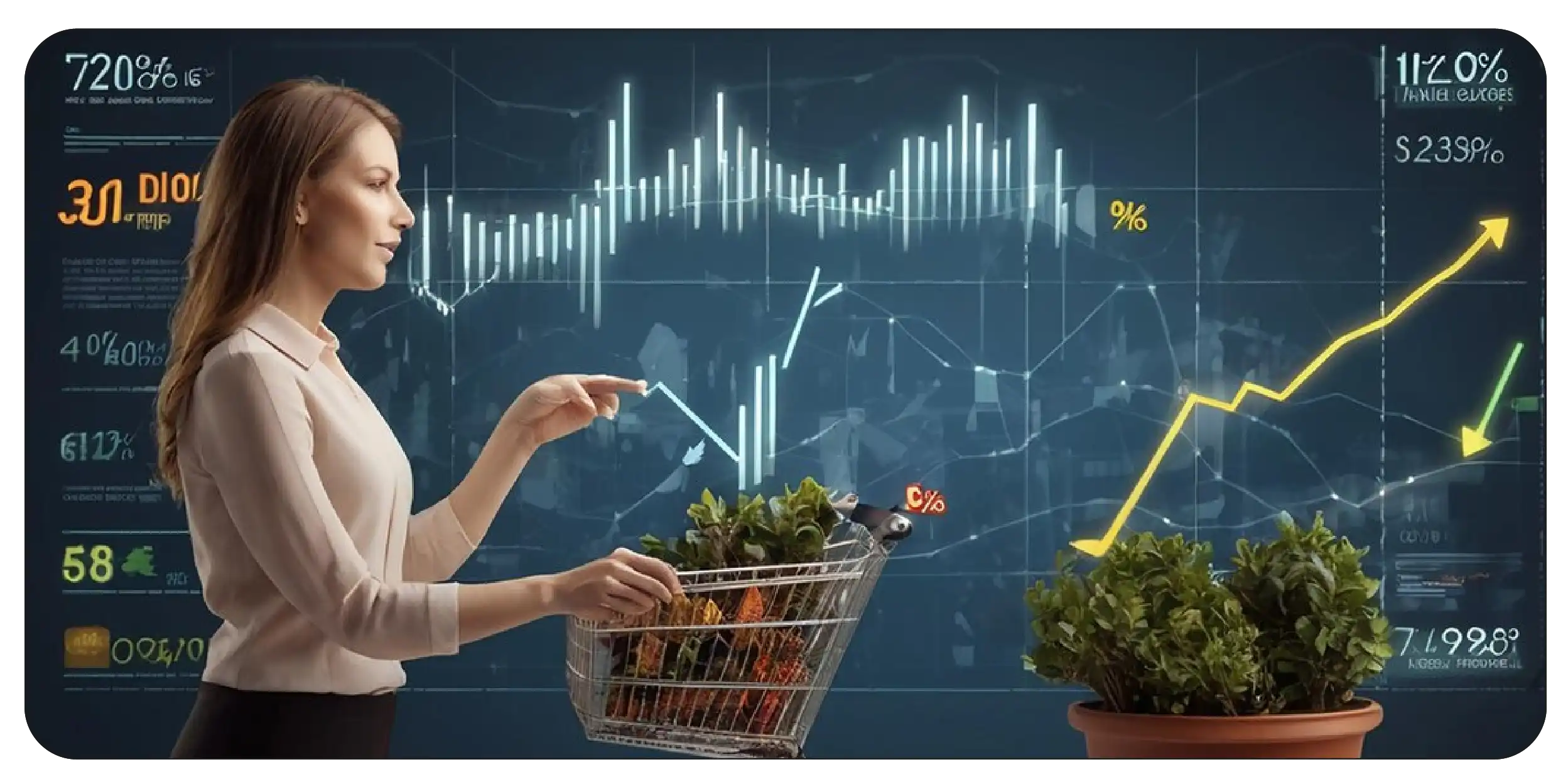
Understanding pricing dynamics in the fast-moving consumer goods (FMCG) sector is critical for
long-term strategic planning. By Scraping Grocery Prices for FMCG Market
Trends, companies can uncover valuable insights around seasonal surges, consumer
price sensitivity, and product lifecycle fluctuations. This enables the development of optimized
pricing models, informed promotional calendars, and demand-forecasting strategies that align
with real consumer behavior.
From 2020 to 2025, FMCG brands that incorporated pricing trend data into their forecasting
models achieved 33% higher accuracy in predicting demand shifts. This wasn’t limited to a single
product category—snacks, beverages, cereals, and personal care products all showed measurable
price movements and predictable peak seasons.
| Product Type |
Avg. Price Growth (YoY) |
Peak Season Pricing Surge |
| Snacks |
6.4% |
18.7% |
| Beverages |
5.1% |
14.3% |
| Cereals |
4.7% |
12.5% |
| Personal Care |
7.2% |
20.4% |
Such data, extracted from thousands of online listings via web scraping, supports granular
analysis. For instance, hydration beverages see price hikes in April-May as summer kicks in,
while snacks experience a surge during festival months (October–December), often coinciding with
bundling and gifting promotions. These insights help retailers and manufacturers optimize both
stock levels and pricing campaigns accordingly.
Scraping also sheds light on price elasticity, allowing brands to test various price points and
measure conversion impacts. If a particular cereal brand raises prices by 5% and sees only a 1%
drop in volume, that elasticity data becomes part of a strategic toolkit for future pricing
decisions. Similarly, a competitor's discount campaign and its timing can be benchmarked and
integrated into a reactive promotional framework.
Additionally, this long-term scraping process identifies price ceilings—the maximum consumers
are willing to pay before switching or delaying purchases. Knowing this helps prevent
overpricing and ensures price adjustments remain within acceptable consumer thresholds.
Ultimately, Scraping Grocery Prices for FMCG Market Trends turns raw pricing data into a
strategic advantage. It ensures brands aren’t just responding to market shifts but are
anticipating them—backed by evidence, driven by patterns, and refined by years of pricing
history across diverse geographies and product types.
Web Scraping Supermarket Prices and Promotions Data for Regional Targeting
One-size-fits-all pricing strategies no longer serve the needs of today’s diverse retail
landscape. To effectively tailor campaigns, brands must understand how price sensitivity and
promotional effectiveness vary across regions. By Web Scraping Supermarket Prices and
Promotions Data, businesses gain access to granular intelligence that reveals how
pricing and deals perform across metros, Tier 2 cities, and smaller towns. This intelligence has
transformed regional targeting from guesswork into a data-driven science.
Between 2020 and 2025, brands that used regional price scraping saw a 27% increase in conversion
rates through hyperlocal promotional strategies. A closer look reveals that metro cities, with
higher digital adoption and spending power, responded most positively to dynamic offers.
| Region |
Avg. Price Promo Variance |
Conversion Uplift (%) |
| Metro Cities |
11.8% |
+29% |
| Tier 2 |
9.2% |
+23% |
| Tier 3 |
7.6% |
+19% |
These numbers highlight the need for localized promotions. For example, grocery items like
organic produce or gourmet snacks often perform well in metros with premium pricing, while Tier
2 and Tier 3 regions respond better to bundled discounts or value packs. With web scraping,
brands can identify which store locations or regions offer steep discounts and replicate or
counter those strategies in nearby zones.
More importantly, this process helps avoid over-promotion or stock imbalances. Imagine launching
a 20% discount nationwide on a premium hygiene product only to find it overstocked in smaller
towns and out of stock in urban areas. Web Scraping Supermarket Prices and Promotions Data helps
mitigate such risks by enabling predictive insights. Retailers can now launch promotions at the
right time and place, aligned with historical and real-time demand data.
This approach also benefits omnichannel operations. Scraped regional pricing data feeds into
dashboards that inform online-offline parity, city-specific banners, and mobile app alerts
tailored to a user’s location. For instance, if a Tier 2 city's brick-and-mortar store offers a
weekend promo on cereals, the brand can mirror that in its eCommerce store targeting users in
that same geography.
Ultimately, regional promotion success depends on timely and accurate data. With automated
supermarket price scraping, brands now have the tools to execute smart, localized marketing
strategies—driving conversion while optimizing inventory and promotional ROI across regions.
Quick Commerce Grocery & FMCG Data Scraping for Dynamic Inventory
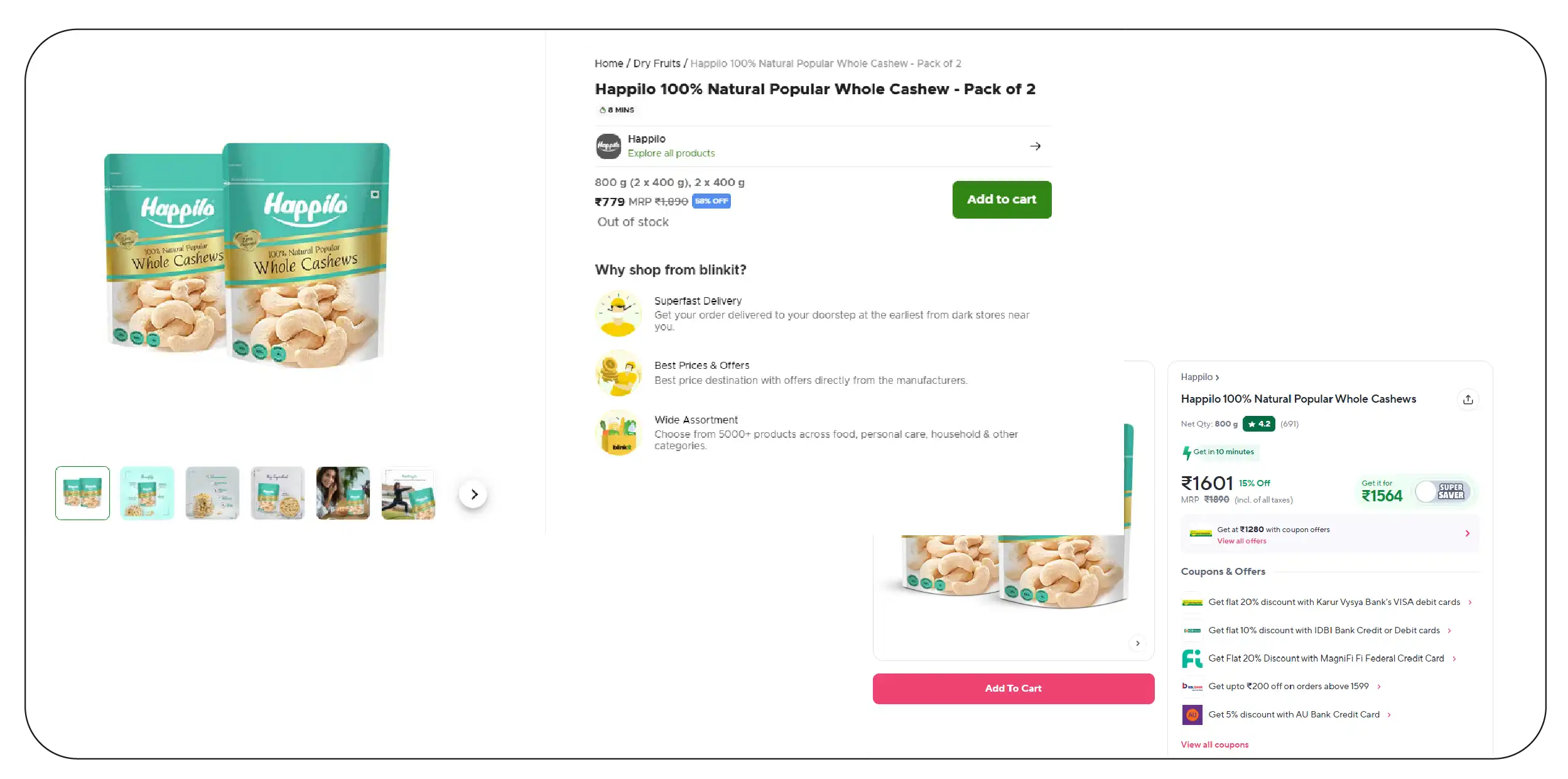
The explosion of instant delivery models has revolutionized how groceries and FMCG products are
sold, managed, and consumed. In this fast-paced ecosystem, having access to Quick
Commerce Grocery FMCG Data Scraping is no longer optional—it's a necessity.
This technology allows brands to keep up with rapid inventory turnover, price fluctuations, and
shifting consumer demand across top quick commerce platforms like Zepto, Blinkit, Instamart, and
Dunzo.
From 2020 to 2025, the number of FMCG brands adopting quick commerce channels grew by an
impressive 81%, reshaping inventory cycles and fulfillment strategies.
| Year |
FMCG Brands in Q-Commerce |
Avg. SKU Turnover (Days) |
| 2020 |
5,600 |
12.5 |
| 2021 |
7,300 |
10.2 |
| 2022 |
10,100 |
8.7 |
| 2023 |
13,900 |
6.9 |
| 2024 |
16,500 |
5.4 |
| 2025 |
18,300 |
4.2 |
These figures highlight an increasingly compressed inventory cycle, with products turning over
in just 4–5 days by 2025. With such rapid movement, brands need instant visibility into what's
selling, what’s not, and how pricing and promotions shift in real time.
Quick Commerce Grocery & FMCG Data Scraping empowers businesses to track SKU-level
performance across categories like snacks, beverages, dairy, personal hygiene, and OTC pharma.
During demand spikes—such as weekends, seasonal changes, or festive sales—scraped data enables
automatic price optimization and replenishment actions through AI-based triggers. For instance,
if a surge in “ready-to-eat” items is detected due to a monsoon, pricing and stock can be
dynamically adjusted in high-demand locations.
Moreover, this data supports hyperlocal inventory planning. Retailers can forecast stocking
needs based on neighborhood-level trends scraped from delivery apps, ensuring the right SKUs are
available within 15-minute delivery zones. This granular insight helps reduce stockouts, cut
wastage, and improve service reliability—key metrics in the success of quick commerce.
Beyond logistics, scraped insights also help brands personalize marketing. Knowing which
products gain traction in specific delivery time slots or geographic zones enables targeted push
notifications, influencer campaigns, and seasonal product placements.
In summary, Quick Commerce Grocery & FMCG Data Scraping delivers real-time inventory
intelligence, price agility, and demand prediction—giving brands a competitive edge in one of
retail's fastest-evolving channels.
Stay agile in fast delivery markets with Quick Commerce
Grocery & FMCG Data Scraping—optimize inventory and pricing in real
time.
Contact Us Today!
Web Scraping Grocery Price Data for Predictive Intelligence
In today’s competitive grocery landscape, being reactive is no longer enough. Modern retailers
and FMCG brands are embracing predictive analytics powered by Web Scraping Grocery Price Data to
anticipate market movements before they happen. By continuously extracting price, inventory, and
promotion data from eCommerce platforms, businesses can feed machine learning (ML) models that
accurately forecast trends, competitor behavior, and consumer demand shifts.
Between 2020 and 2025, the use of predictive models based on scraped grocery price data became
mainstream across large supermarket chains and quick commerce players. Retailers leveraging
predictive scraping strategies saw a 17% improvement in gross margins, proving the measurable
business impact of this intelligence layer.
| Metric |
Predictive Retailers |
Non-Predictive Retailers |
| Avg. Gross Margin |
34.6% |
29.7% |
| Forecast Accuracy (90-day) |
89.1% |
72.8% |
| Stock Optimization Ratio |
92.4% |
78.3% |
These models help businesses move from reactive pricing changes to proactive decision-making.
For example, by scraping prices of pantry staples and tracking sudden discounts by competitors,
a predictive system can simulate how a 5% price cut in cooking oils by a rival could shift your
share of voice in a particular region or channel. Retailers can then respond with calculated
promotions or loyalty offers to preserve their market position.
Web Scraping Grocery Price Data also plays a pivotal role in planning seasonal strategies. By
analyzing past year’s pricing patterns for items like beverages in summer or sweets during
festivals, businesses can predict when to adjust pricing, stock levels, and marketing spend for
maximum return.
In inventory management, predictive scraping models minimize overstocking or stockouts. If the
model detects increased demand for ready-to-cook meals based on a sudden rise in keyword
mentions or competitor availability drops, the system can trigger procurement or pricing actions
in real time.
Moreover, as price elasticity varies across regions and categories, predictive scraping enables
geographic granularity. For instance, a 10% discount on personal care products might lead to
higher conversion in Tier 1 cities but not in Tier 3 regions. Knowing this before executing a
campaign is the difference between waste and ROI.
By investing in Web Scraping Grocery Price Data for Predictive Intelligence, retailers transform
data into foresight, elevating pricing and inventory strategy from operational necessity to a
revenue growth engine.
Why Choose Product Data Scrape?
Product Data Scrape delivers end-to-end Grocery Data Scraping Services that empower brands,
retailers, and data firms to gather real-time, high-volume pricing data across formats. Whether
you need to Scrape Grocery & Gourmet Food Data , monitor SKUs daily, or integrate with cloud
dashboards, our solutions scale to meet your objectives.
We specialize in structured Grocery Store Dataset delivery, powered by AI-based normalization
and taxonomy mapping. Our support extends to API provisioning, webhook notifications, and bulk
file delivery.
With expertise in Grocery & Supermarket Data Scraping Services, our clients trust us for
reliability, data freshness, and compliance-first execution. From Web Scraping for Supermarket
Prices and Promotions Data to Web Scraping with AI applied to pricing clusters, we make pricing
intelligence a competitive edge.
Conclusion
To outprice competitors in today’s volatile grocery landscape, access to high-quality pricing
intelligence is non-negotiable. With Grocery API Data Extraction for Pricing Insights, companies
can stay ahead of pricing trends, match regional promotions, and prevent revenue loss from
outdated data.
Product Data Scrape enables this with best-in-class Grocery Data Scraping Services across
geographies and product categories. Whether you’re a D2C brand, national retailer, or price
aggregator, our APIs and scraping infrastructure ensure you act faster, smarter, and more
profitably.
Ready to optimize your grocery pricing strategy with real-time data? Contact Product Data Scrape
today and turn volatility into a competitive advantage.





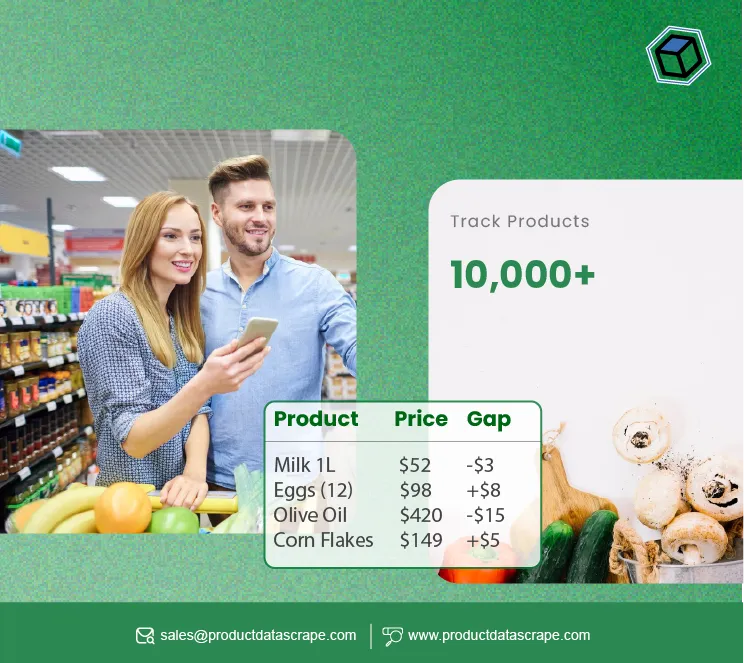


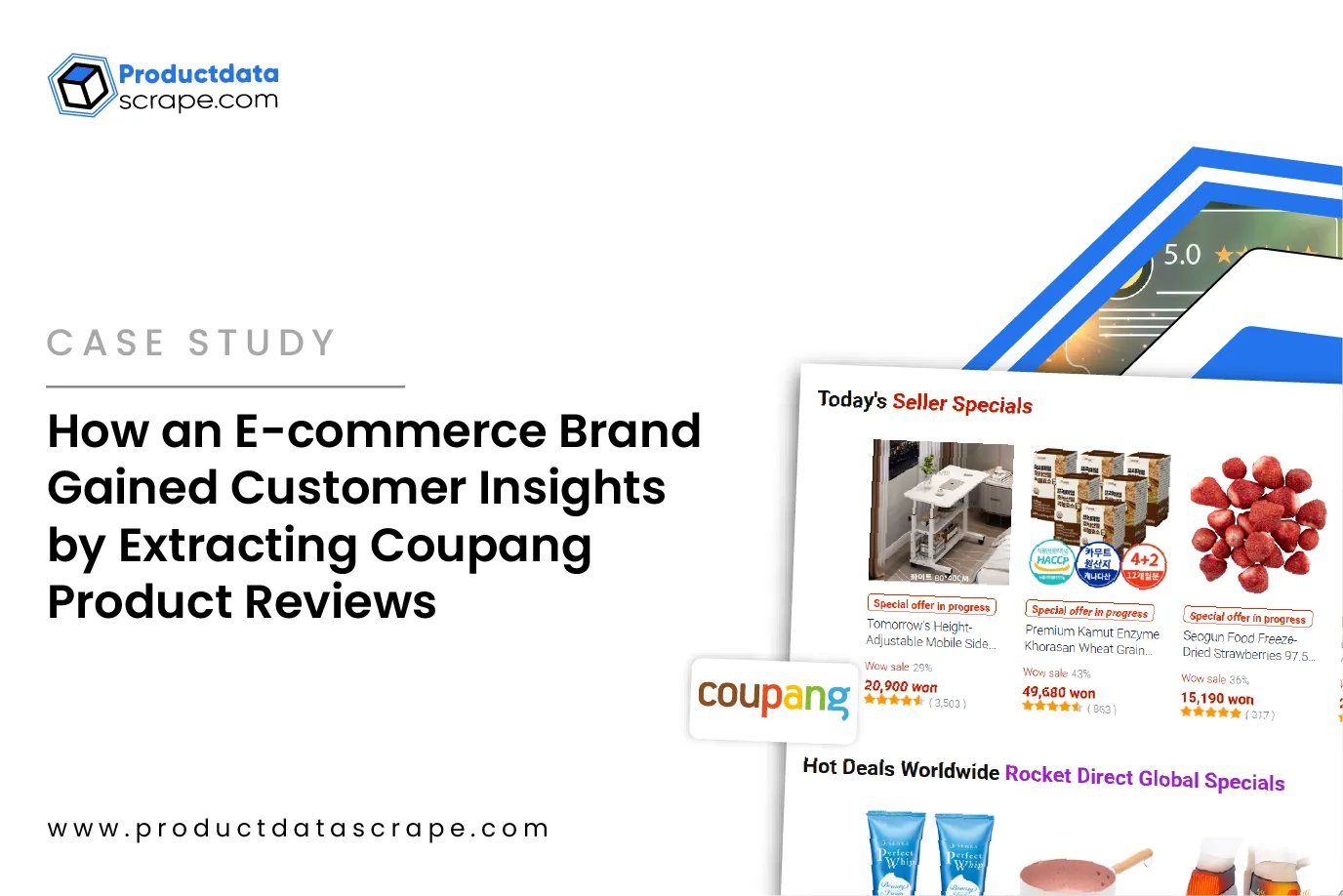










.webp)
-01.webp)

.webp)
